Bryan Pearson's Blog, page 8
June 13, 2018
The Loyalty Surgery, London, UK
Join LoyaltyOne CEO, visionary and myth-buster Bryan Pearson as he speaks to “loyalty on the move”. Bryan shares his perspective on 5 key focus areas that retailers must address in the face of the perfect storm of data regulation, technology disruption and experience re-invention impacting the loyalty landscape:
The exponential power of more data
New loyalty frontiers bringing buyers and sellers together
Blockchain: loyalty disruptor or hype machine?
Data revolution and customer control
The new wave of CX innovation
The Loyalty Surgery is a full day conference to be held in the Tower of London New Armouries, a lovely building actually inside the great walls. For delegates, it is an exciting and atmospheric place to visit, especially as a delegate place includes the opportunity to take part in a tour of the Tower during the lunch break, or a walk and talk meeting which takes in a stroll around the wall itself, or even a glimpse at the Crown Jewels.
June 6, 2018
5 Analytics Tips For Retail, From Spotify, Delta, Capital One And Others
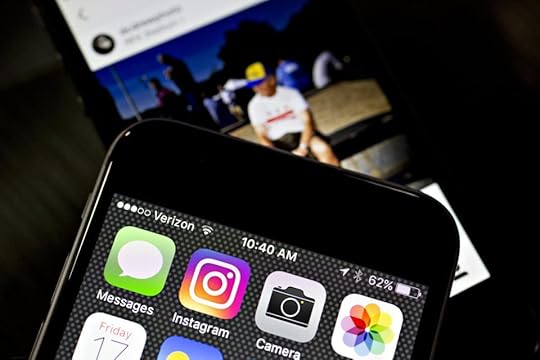
(Andrew Harrer/Bloomberg)
EBay is testing whether one of the most effective approaches to shopper engagement exists outside the aisle by adopting an algorithm that may be best recognized for picking actual rhythms.
Its new app service, called Interests, takes a simple approach to opening “getting-to-know-you” conversations with shoppers: a questionnaire that results in individualized homepages, featuring themes and items selected specifically for each shopper.
If this approach is music to consumers’ ears, there’s a good reason. It’s similar to the Spotify music-streaming model that uses a variety of feedback and data to better recommend songs and weekly playlists to members.
In eBay’s case, shoppers are asked to answer questions such as “What do you love?” and “What’s your style?” Like Spotify, eBay relies on algorithms to match its users’ chosen interests with their browsing patterns, along with the purchase insights gathered from its 171 million shoppers. (Spotify also cross-references data among users who have similar playlists, recommending the songs some listeners play often to others who have not played them at all.)
Data is not industry-specific, so there’s no reason eBay shouldnt look outside retail for data best practices. Here are five other non-retail brands that set a good example.
Learning From Banks, Social Media, Movies
Instagram: In March 2016, Instagram introduced an algorithm that shifted how member posts appeared in its feeds. Previously, it had listed posts in chronological order, but then changed its ranking to engagement levels, prioritizing the kinds of posts members were likely to spend more time with based on previous activities. The cause was opportunity. Instagram had determined its users were missing an estimated 70% of posts when they were listed chronologically, and many of those posts would be highly relevant. Retailers can present their online stores similarly by customizing landing pages with items their loyalty program members reviewed or purchased. To keep intrigue alive, they could throw in an item the shopper had lingered over long ago, and add new-to-store merchandise that would complement recent searches.
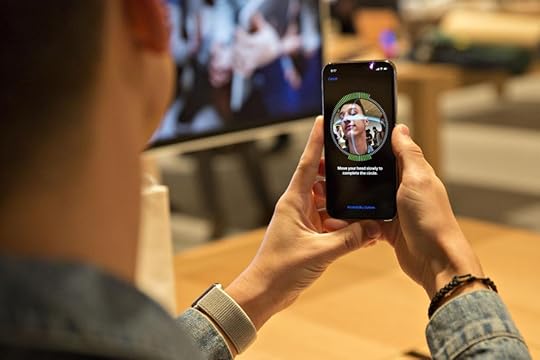
(Daniel Acker/Bloomberg)
Delta Air Lines: Walmart has patented facial-recognition technology to identify shopper pain points (and happy moments) during checkout, but Delta is taking pain to heart. It used heart-rate monitors on volunteer fliers to track their heartbeats at 11 stressful moments along the travel passage, from finding a parking spot and boarding the plane to collecting baggage. Delta also tracked where on the planes travelers looked, to be more intuitive, using biometrics and bio data. If volunteers agreed to wear monitors for Delta, then why wouldn’t they for retailers? Merchants can choose how to collect or identify those emotional moments along the experience chain, and the biometrics are quite telling.
The Dorchester Collection Hotels: This luxury hotel group analyzed online review and social media data to figure out why the number of weddings, but not overall spending, was rising at its Hotel Bel-Air and Beverly Hills Hotel. It detected anxiety was a major contributor, distracting bride, groom and the wedding parties from the hotel’s various experience offerings. Dorchester used these findings to ease aspects of wedding planning, from providing its logo and designs to recommended invitation printers to partnering with Rodeo Drive dress shops that offered guest discounts to brides. It also began marketing its wedding services to stand apart from rivals. Retailers could apply the same data analytics to identify the most challenging shopping periods, such as the holidays and back-to-school, and create specific services that ease the tension that sometimes overshadows the experience of these important events.
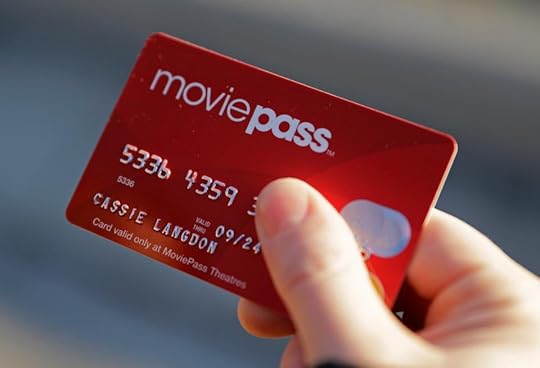
(AP Photo/Darron Cummings)
MoviePass: In return for unlimited movie access, the app-based subscription service can follow which movies its members are going to see, as well as where and when. Its goal is to gather enough insights from members to suggest upcoming films or recommend partner shops or eateries near the multiplex. A moviegoer could, for example, receive a notification offer for a free side at a neighboring restaurant. Data partnerships are not untested in retail, though a look into the shopper journey suggests they explore beyond the obvious places people pass on their way to and from the store. A supermarket, for example, could benefit from a data-sharing partnership with a home-improvement chain, because DIY projects (especially kitchen ones) are often punctuated by premade or carryout meals. And the DIY chain would benefit from the positive perceptions it gets for suggesting the meals.
These companies, like Spotify, are striving to use data to create the equivalent of the greatest hits in customer experience. Nothing is stopping retailers from doing the same; they just need to know the rhythm, and algorithms, of their shoppers.
This article originally appeared in Forbes. Follow me on Facebook and Twitter for more on retail, loyalty and the customer experience.
May 31, 2018
Amusing The Shopper: 5 Ways To Make Shopping Fun Again

(AP Photo/Matt Rourke)
One could see why the average person would prefer colleagues to mannequins. But when they enjoy desks more than deals, meetings more than merchandise — then we’ve got an inventory crisis of fun in the retail industry.
Yet the shortage is here, according to a new report by the Gensler Research Institute. Despite investments in robots, virtual reality, voice-assisted shopping and a slew of digital tools, retailers have been unable to instill fun as a reliable factor of the shopping trip. In fact, consumers are 1.4 times more likely to have fun on the job.
Specifically, of the 4,000 consumers surveyed, just 56% said they have fun shopping, while 77% have fun at work. Similarly, 62% said they do something exciting at work, compared with 44% while shopping.
Also then there’s this finding from Gensler’s Experience Index: 78% of shoppers who took the time to turn off their mobile devices while in the store reported having a great experience.
This would indicate investments in retail technology may work against the desire to get shoppers to stay longer and spend more. Yet most retailers, 60%, are increasing their technology budgets, and 53% are expected to invest more in artificial intelligence.
Widgets Don’t Bring Joy
Retailers may be throwing money at a solution to a slightly different need, however. Fun is the byproduct of feeling relaxed, inspired and entertained. Technology can enable it, but it won’t work unless the basic requirements of fun and happiness are recognized.
Sure enough, the Gensler research shows the factors that contribute to a great retail experience include novelty, beauty and authenticity. As for the latest technologies and value, shoppers rated them necessary for a mere good shopping experience.
Perhaps retailers, in their race to catch up with tech adoption, have bypassed the most important motivations that propel people onward. Shoppers often are on a mission — a different kind of job — but they seek happiness in the aisles as much as in the office. And as employers have learned, we are more likely to do a better job if we are having fun.
That means surrounding customers with appealing sounds, sights and smells. Here are five ways how.
Help them live in the moment. Because shopping is often a chore, the customer would invite any effort to take her mind off the task at hand — and the tasks to follow. Place unexpected delights among the aisles, such as a plate of mini cupcakes or a string quartet from a nearby college, and even a trip for gym socks can be transformed into a “me” moment. Note the attraction needn’t align with whatever the shop sells; unpredictable surprises are often more effective. The Manhattan shop Story, recently acquired by Macy’s, takes this approach by completely changing its inventory and theme every four to eight weeks, transporting the shopper to a new place with each revival.
Be a sanctuary. People are likely to spend more time in surroundings where they feel good about themselves. The home design store Nannie Inez, in Austin, Texas, caters to specified tastes with whimsical merchandise that brings joy and elevates everyday moments. Most of its items, from an original artist’s print of three monkeys (signed) to a ring that looks like a curved matchstick, were discovered by the founders in their world travels. Meanwhile, at Saks Fifth Avenue’s flagship store in Manhattan, an entire floor called The Wellery has been dedicated to self-indulgent wellness services, including a salt therapy booth and body stretching.
Surround them with beauty. There’s a reason people travel to oceans and mountains but not to landfills and blighted buildings. Yes, a bare-boned store means lower prices, but there are low-cost ways to infuse beauty into the format. Natural light, splashes of color and elegant music can elevate the mood and prepare the shopper for fun. Employees or community groups can paint murals on the walls or tend to interior gardens. A supermarket could hold sculpture contests using canned goods. The key is in knowing what matters to the shopper: Beauty is in the eye (and ears) of the beholder.
Give them meaning. Many believe that it is human nature to be generous and altruistic. Being so certainly makes most of us feel better about ourselves. This is why brands such as Toms, which donates a pair of shoes to a needy child for every pair it sells, are flourishing. Lots of supermarkets, including Whole Foods, accept grocery donations, but a grocery store can also deliver food to the local food bank and invite shoppers to volunteer. A clothing store can organize fashion shows, with shoppers and employees modeling, to benefit women’s shelters.
Make it a game. An obvious way to bringing fun to shopping is through play, which has been widely sought through digital competitions and other forms of gamification. A retailer could bring physical adult play to the store as well. Sur la Table offers cooking classes, REI has its rock walls for climbing and the craft store Michaels provides a range of free classes including jewelry making and cupcake decorating. And for kids, there’s the Lego store, where young ones (and their adults) can spend hours building imaginary creations.

(LEGO®)
The goal is simply to get shoppers to smile. A quick survey of stores, regardless of merchandise, shows too few people are. Yet what a difference it would make. Consider this finding from the Gensler research: 71% percent of retail visitors who do not intend to make a purchase often end up doing so, meaning seven in 10 make impulse purchases.
Imagine what that figure would be if they were having more fun.
This article originally appeared in Forbes. Follow me on Facebook and Twitter for more on retail, loyalty and the customer experience.
May 29, 2018
Kohl’s Launches New Rewards Program, Combining 3 Elements: What Shoppers Can Expect
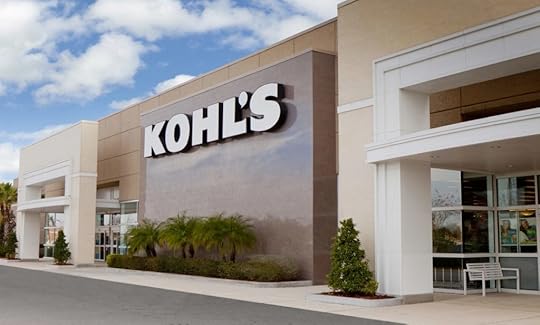
(Kohl’s)
Kohl’s, in an effort to simplify its rewards program and increase participation among members, is launching a new initiative that trades points for cash and combines elements of its credit card, sales events and Yes2You Rewards.
The program, simply called Kohl’s Rewards, will pilot in eight markets and roughly 100 stores in late May, said Greg Revelle, chief marketing officer at Kohl’s. All Kohl’s Yes2You members and Kohl’s Charge holders in those markets will automatically be enrolled in the new program.
“Our hope is that the new Kohl’s Rewards program will allow us to do three things: connect with new customers in a different way, deepen the relationship with customers and simplify Kohl’s value proposition,” he said.
Key among the new program’s features is it only rewards Kohl’s Cash — no more points. Members will earn 5% in Kohl’s Cash for every purchase they make, or 10% on every purchase if they use the Kohl’s Charge. Additionally, members will receive $10 Kohl’s Cash for every $50 spent during special “Cash Bonus” events.
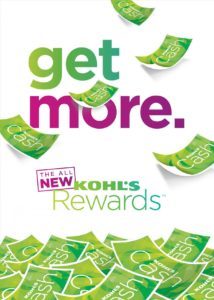
(Kohl’s)
Other features of the program include:
Kohl’s Cash will be tracked with a single barcode in store, online and on the Kohl’s app.
Kohl’s will alert members when it is time to redeem, as redemption windows will vary.
Members will have access to exclusive events featuring 30%, 20% or 15% off.
Elite Members (charge customers who spend $600 or more in a calendar year) will receive free standard shipping when using their Kohl’s Charge and receive early access to Black Friday deals.
Revelle took some time to tell us what the program means to Kohl’s shoppers. Excerpts follow.
Q: If I am a Kohl’s Yes2You member, how will my membership experience change?
A: We’re making customers’ loyalty experience simpler and richer. We’re doing away with Yes2You points and giving customers more of what they have told us they love — Kohl’s Cash, which is unique to the Kohl’s brand. Every member will have the opportunity to earn more Kohl’s Cash every day and save more often.
Additionally, we are introducing new tools, including mobile, digital, email and even personal reminders from associates at checkout, to ensure they never miss an opportunity to redeem the Kohl’s Cash they’ve earned.
Q : What triggered the change?
A: We have an incredibly loyal customer base who know us for our three existing rewards programs — Kohl’s Charge, which accounts for nearly 60% of our tender; Yes2You Rewards, with 30 million active members; and our Kohl’s Cash benefit, which is used by millions of customers each year. But we know maximizing all of the value offerings can be complex, so we saw an opportunity to unify all three rewards programs into a single, easy-to-use rewards platform.
Q: What have your shoppers told you they want in a program?
A: Customers have told us they want Kohl’s to simplify their experience with our loyalty program, enhance the benefits they receive, and track their rewards for them. And of course they have told us they want more Kohl’s Cash!
Q : Shoppers do expect more simplicity. Will Kohl’s Rewards require members to hold a membership card, or pay with the Kohl’s credit card?
A: No, customers just need an email address, phone number and ZIP code to join the Kohl’s Rewards pilot. If you don’t have a Kohl’s Charge card, you’ll still earn 5% Kohl’s Cash on every purchase, $10 Kohl’s Cash for every $50 spent during our Kohl’s Cash Bonus events, plus 30%, 20% or 15% off during exclusive savings events throughout the year.
Q: In what eight markets is Kohl’s Rewards going to be tested?
A: Phoenix, Arizona; Indianapolis, Indiana; Minneapolis, Minnesota; Austin and San Antonio, Texas; Buffalo and Rochester, New York; and Raleigh, North Carolina.
Q: When will the program roll out nationally?
A: We intend to roll out some version of the new program to all our stores nationwide in 2019.
Q: What becomes of the Kohl’s points members are holding?
A: Yes2You Rewards members’ current points will convert to Kohl’s Cash with the launch of Kohl’s Rewards in the eight pilot markets. Any Yes2You Reward certificates issued by May 1 will still be valid according to the dates on the certificate.
Q : How will member data be used?
A: We will leverage Kohl’s Rewards pilot member data to provide them an easier and more personal loyalty experience. For example, we’ll track Kohl’s Cash for members and remind them when they have Kohl’s Cash available to use in-store and online. We’ll also be delivering personalized recognition and exclusive benefits for our members based on their status level in Kohl’s Rewards.
Q : If I am not a rewards member, will I still have access to Kohl’s Cash events?
A: Yes, all Kohl’s customers will be able to earn Kohl’s Cash during our Kohl’s Cash Bonus Events ($10 Kohl’s Cash for every $50 spent).
This article originally appeared in Forbes. Follow me on Facebook and Twitter for more on retail, loyalty and the customer experience.
May 25, 2018
Royal Shifts In Weddings: 4 Trends Behind Banana Republic’s Breakup With Bridal Wear

(Photo by Sam Aronov/Pacific Press/LightRocket via Getty Images)
Banana Republic is peeling off its in-store bridesmaid business, and in doing so it’s revealing a lot about the way today’s bride thinks.
As in: Less fluff, more freedom. The impending royal wedding aside, today’s soon-to-be brides and bridesmaids are less willing to invest small fortunes and several afternoon fittings into yards of extravagance that will, after a brief outing, be carefully packed away. Wedding dress worship is heading for the doors like a young bride with second thoughts.
The latest evidence is in the shuttering of Weddington Way, the bridesmaid dress shops that have since 2011 operated within Banana Republic stores. Parent company Gap Inc. in mid-April said it would shutter the shops and is only guaranteeing online orders to June 11.
It isn’t the first national retailer that flirted with and then abandoned the bridal business — J. Crew did two years ago. David’s Bridal, meanwhile, is struggling. The Gap’s decision may be less about a bad fit, however. It appears to reflect a deeper shift in how consumers approach the Big Day — or not.
No Royal Influence
As The Knot explained in its “Real Wedding Study,” which shows the average cost of a wedding dipped in 2017 for the first time, year-over-year (to $33,391 from a record high of $35,329 in 2016): “Couples are prioritizing different details, namely personalization, guest experience and cultural elements.”
Among those less-prioritized details, apparently, is bridal wear. The average cost of a wedding dress in 2017 slipped to $1,509. In 2016, it was $1,564.
Could Prince Harry’s wedding to Meghan Markle, with an estimated price tag of $45 million, cause would-be brides to splurge more in 2018? Trends in the bridal wear industry indicate otherwise. Several changes, from who is footing the bill to redirected spending, are cutting into the dress.
I’m Busy, I’m Independent And I’m Really Selective
These four cultural events provide some insight into what the bride is thinking.
Fast fashion. Quick-shifting fashion tastes and more competition from non-bridal stores have led many brides and bridesmaids to retailers that provide at-the-moment styles more quickly, and with less fuss. This availability has supported a growing casualization of the wedding celebration that extends to lower-priced, ready-to-wear dresses. So while Banana Republic’s Weddington Way is pulling back, other retailers are stepping up to offer less expensive and trendy (not traditional) selections. H&M, for example, introduced a collection of affordable wedding dresses for brides and bridesmaids in March, with gowns for as little as $129. Others include BHLDN (operated by Anthropologie), ASOS and Reformation.
She’s DIYing. The bride is doing more of the planning, and financing, on her own. Even Kate Middleton paid for her six-figure Alexander McQueen gown, worn in the 2011 royal wedding to Prince William, and Meghan Markle is expected to pay for her gown as well. As for the planning part, women are increasingly seeking options that bring the service to them, much like direct-to-consumer groceries, prescription eyeglass and used automobiles. The websites Anomalie invites shoppers to design their own dresses at predetermined budgets and get them fast — in about three months, compared with up to a year for a traditional custom dress. Similarly, the website Azazie removes the middleman so future brides and bridesmaids can personalize dresses from hundreds of options for as little as $200.
Besting the guests. Brides and grooms on average paid for more than 41% of their wedding celebrations in 2017, according to The Knot. While a smaller portion of those budgets was earmarked for the dress, more was allocated to the guest experience. The average cost per guest reached an all-time high of $268 in 2017, as couples invested more in wedding-day entertainment from live music to selfie stations to lawn games.

(Shutterstock)
Formal ceremonies, meanwhile, declined in favor of more creative venues that are less expensive, such as barns, art galleries and public parks. In short, the dress is becoming secondary to its surroundings. Also taking a back seat: great-aunt traditions such as garter belts and bouquet tossing.
Fewer “I Do’s.” More women are putting career and other interests before wedding bells — temporarily or for good. The median age of a woman entering her first marriage was 27.4 in 2017, according to the Census Bureau. Meanwhile, the percentage of Americans who never married has risen over the decades — to one in five among those 25 and older, according to the Pew Research Center. The decline is due in part to an increasing number of adults who choose to live together, including having and raising children, instead of getting married. In such cases, couples are replacing retailers such as Weddington Way with those that meet household needs. And then there’s the niche trend of self-marriage, where no partner is desired and the dresses are optional.
The shuttering of Weddington Way’s physical stores should be viewed not as the fall of an industry, but the emergence of a new era in an age-old institution. Retailers that correctly recognize what is important to the bride-to-be are those that see the world through the eyes of a complete woman with many responsibilities and choices — including pants.
This article originally appeared in Forbes. Follow me on Facebook and Twitter for more on retail, loyalty and the customer experience.
May 23, 2018
4 Ways The Demise Of Plenti Will Go On To Reward Shoppers
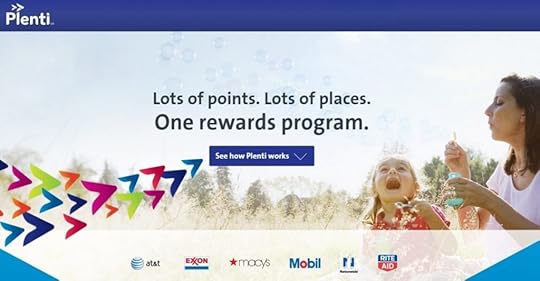
(Photo by Mighty Travels/Plenti via Flickr)
The points may soon expire, but members of the folding Plenti rewards initiative could benefit from some pointers the beleaguered program will likely leave behind, especially for retailers.
Plenti, launched in 2015 by American Express, will end operations in July after losing several key merchant partners and failing to gain traction among American consumers. The program, the first of its kind in the U.S., is based on the coalition model of loyalty initiatives common in other countries, through which members earn rewards from a network of partner companies and then redeem those points however they wish across the same network.
But by January, several of Plenti’s partners, including Macy’s, Hulu, AT&T, Nationwide, Enterprise, Alamo and Expedia, had dropped out. The cause could be traced to both a lack of awareness and inactivity — despite national advertising campaigns by Plenti and its partners. Only half of consumers were familiar with the program, according to research by Maritz Motivation Solutions, a loyalty program provider. Also, of Plenti’s members, less than half said they had redeemed a reward — most only purchased from one or two Plenti partners.
In April, Plenti stopped taking subscribers.
The passing of Plenti may suggest that U.S. consumers and merchants aren’t ready for a model that has been successful in many foreign markets. But its failure has more to do with the success of the loyalty industry in the U.S. overall, and among retailers in particular. In this respect, shoppers may actually experience ongoing benefits from Plenti’s demise.
Before exploring those perks, let’s review what went wrong for Plenti.
Why It Failed
In its first year, the Plenti program appeared promising. By 2016, it counted 36 million active members and was adding new partners, including Chili’s. But in the summer of 2017 AT&T pulled out. Macy’s followed in February, after introducing its own currency-neutral Star Rewards program. Among the factors that contributed to Plenti’s inability to latch on:
It’s a big country. High geographic fragmentation among U.S. companies, particularly high-frequency retailers such as grocers and gas stations. Even some of the largest companies in the coalition do not operate in all 50 states.
It’s a mature industry. Many U.S. brands are already invested in their own loyalty programs and have mature databases of shopper insights. Moreover, U.S. companies are protective of sharing these insights with other companies, which is an essential component of a successful coalition.
It wasn’t familiar. The value of the Plenti program was not well understood. Shoppers apparently didn’t recognize the value of the program, found it cumbersome or felt they had to wait too long for rewards.
Its brands had limited appeal. Lastly, Plenti would not allow competing brands from the same industries and same regions to participate if other existing partners objected. This limited brand participation, which in turn curbed geographic reach and consumer appeal.
4 Lessons Gleaned From Failure
These causes for defeat could, however, be parlayed into positive shopper experiences. Assuming retailers have been watching Plenti unfold (and then fold) closely, shoppers could expect to benefit from these four takeaways, which hopefully will become part of the shopper experience.
More tender-neutral programs. Unlike traditional loyalty programs, coalitions are tender-neutral, meaning members can pay by credit card, cash, mobile wallet or check. Macy’s is the latest to pick up on the appeal of this payment flexibility and in February announced members of its relaunched Star Rewards program could pay for purchases using other credit cards. Since Macy’s announcement, Target followed suit, introducing its Target Red program, which rewards shoppers no matter how they pay. Both chains follow Nordstrom, which in 2016 changed its rewards program to be tender-neutral. More card-based reward programs are likely to follow.
Better-targeted offers. One of the challenges of operating a portfolio of many merchants is delivering member communications that come across as personalized and relevant. True, most U.S. retailers have been operating their own loyalty programs for years. However, not all are adequately equipped to respond quickly to the changing tastes of localized customers. The threat of a coalition program such as Plenti should have motivated retailers to direct more resources to shopper analytics so they could connect more effectively, more frequently and with greater relevance. Think of rewards linked to a professional sports team before a big game, or to seasonal events.
New kinds of partnerships. Plenti’s model may not have worked, but retailers may still explore elements of it, such as unlikely partnerships. The key is aligning with at least one partner that has high appeal and/or frequency, to broaden the scope of enrollments. The evolution of shopping malls into communities of across-the-board services could facilitate unexpected retail alignments, such as with doctors’ offices, day spas or tax services. Think of partnerships that generate rewards for using a particular CPA (and spending that tax refund with the partner retailer), or for visiting a movie theater that operates in the same shopping center as the retailer.
Faster rewards. One of the selling points of coalition programs is they enable members to earn rewards faster, since they have so many more opportunities to spend and earn. I know from experience that collecting enough points for a free flight would generally take less than half as much time through a coalition program than through a credit card-only points initiative. Retailers that offer their most appealing rewards faster would likely stand apart. It doesn’t have to be all the time — bonus periods when hot rewards can be earned with fewer points, or when points double, drum up a sense of urgency and excitement that gets members involved.
Similarly, retailers should think like coalitions and get more creative in their reward options. Instead of “stuff,” they should offer services that make the shopping trip more enjoyable. The goal, after all, is to get the customer into the store (either physical or digital).
Plenti members have until July 10 to use their earned points. In the interim many will likely consider what the real value of a coalition program is. If retailers take note from Plenti’s failures, they may be able to deliver on them.
This article originally appeared in Forbes. Follow me on Facebook and Twitter for more on retail, loyalty and the customer experience.
May 7, 2018
The 6 Factors That Set Bon-Ton On A Different Path From Macy’s
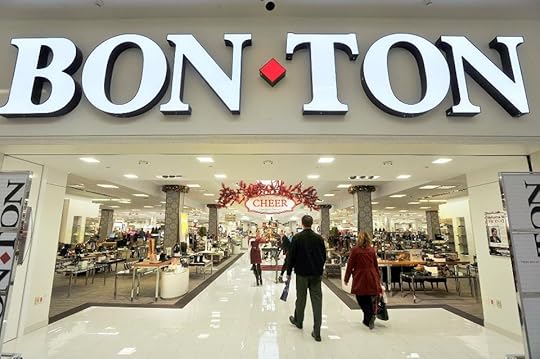
(Photo by John Ewing/Portland Press Herald via Getty Images)
It will be 2018 when the last sweaters are folded, the racks rolled away and the windows papered over, but Bon-Ton Stores, now heading toward liquidation, may have met its maker 13 years ago.
That is when the regional department store chain made the boldest move in its 107-year history. It paid $1.1 billion for Saks’ Northern Department Store Group, a deal that at once doubled its size in key Midwestern markets. The acquisition also exposed Bon-Ton to mounting debt and made it less able to quickly respond to fast-emerging digital trends that reduced shopping trips to malls and department stores.
But Bon-Ton wasn’t the only major retail chain to take a large risk that year. Macy’s Inc. bought May Department Stores for $11 billion, essentially doubling its size as well.
Yet Bon-Ton, the parent of a cluster of historic department stores including Carson’s, Elder-Beerman and Younkers, apparently was less equipped to compete. It filed for Chapter 11 bankruptcy protection in February and in April was sold to liquidators.
Macy’s, meanwhile, remains the nation’s largest traditional department store chain. It struggled in 2017, but a recent turnaround strategy is proving to be promising.
What caused their paths to diverge? A number of obvious and less-evident factors played into Bon-Ton’s demise. Here are six pivotal ways the two mergers differed.
1. Matters of size. In this respect, Macy’s always had the edge. In taking over May Department Stores, Macy’s became a 1,000-store coast-to-coast chain, while the expanded Bon-Ton operated fewer than 300 stores. Its acquisition of Saks’ northern department stores may have been an offensive move to better compete with the May-infused Macy’s (the Saks deal was announced after the Macy’s-May agreement), but the numbers say it all. Macy’s had far greater negotiating power with vendors, including the prices it could demand from apparel suppliers.
2. The names on the doors. Macy’s made a risky but strategic decision to change all of the names of May’s store brands, including Marshall Field’s, to Macy’s. The decision triggered blowback from many loyal shoppers, but in the long term paid off. With just the Macy’s name to promote, the retailer was able to reduce and better manage its national marketing budget, and affordably launch television spots. Bon-Ton maintained the many names of its acquired stores (likely due to regional brand loyalties), which meant different ads had to be created for each brand and its market.
3. The markets mattered. Macy’s, with May, strengthened its coast-to-coast presence with positions in nearly all major cities, including Chicago, Los Angeles, Houston and New York. Bon-Ton, meanwhile, remained a regional player, operating largely in secondary and tertiary markets in 21 states including Wisconsin, Illinois, Iowa and Pennsylvania. In some states, including New Hampshire, Massachusetts and New Jersey, it operated just one or two locations. To stand apart, Bon-Ton aimed to be the upscale department store in small towns, but competition evidently made this bet tough to win.
4. Brand-wide tech adoption. Macy’s national presence also enabled it to more seamlessly adopt a corporate-wide omnichannel game plan, which began to take form in 2010. Many stores served as distribution centers for online orders, cutting costs and easing the process for customers. Further, the “buy online, pick up in store” model drew shoppers into its locations. Bon-Ton’s online strategy may have been compromised by its many store brands, but it did make headway, installing kiosks in stores so customers could access its online inventory. In 2015 it opened a massive direct-to-consumer fulfillment center in Ohio. However, the efforts may have come too late as adaptation of mobile shopping was accelerating at exponential rates, forming new habits.
5. Exclusive names on the products. When Bon-Ton acquired the Saks stores, it did so with an eye on its private-label brands, including Ruff Hewn and Laura Ashley. These exclusive labels would help distinguish the Bon-Ton stores from competition, and it built creative teams to oversee the efforts. But Macy’s had by then been a private-label virtuoso for more than a decade, with a stable of in-house brands and exclusive third-party deals. Its expanded presence just enabled it to negotiate bigger deals with national designers, including Tommy Hilfiger and others. The upshot is some of these same brands had to withdraw from other stores, including Bon-Ton’s.
6. Family matters and size. In 2004, the year before it acquired Bon-Ton generated revenue of $1.3 billion, while Saks posted $2.2 billion, 69% higher. This indicates the Bon-Ton stores were slower movers, and it may not have had the corporate insight to maintain operations of the new Saks locations. Potentially exacerbating its management structure is Bon-Ton had long operated like a family business. Max Grumbacher, grandson of the founder, insisted on not carrying debt, and the chain grew slowly. When his son Tim took over in the mid 1980s, Bon-Ton began to acquire small chains in new markets. The large Saks deal, and the changes to its operations management that likely were required, may have weakened its family-business culture.
Macy’s, in taking on the massive May, became a $30 billion chain, but it still might not have skirted all the challenges its new operations brought. It announced plans to close 100 stores in 2016, bringing it down to fewer than 600 locations, from 800 in 2014. Its revenue in 2017 declined to $24.8 billion, from $25.8 billion in 2016.
Still, Macy’s remains vigilant in its efforts to make the May deal work, and to remain relevant among customers who hold the shopping world in their palms. As it does so, Bon-Ton will fade, but its cautionary tale will linger. In years to come, the next chapter may reveal just how resilient century-old retailers can be in finding their paths to success.
This article originally appeared in Forbes. Follow me on Facebook and Twitter for more on retail, loyalty and the customer experience.
April 23, 2018
Grocers Beware: Food Delivery Closing The Gap Between Campus And Commerce
Supermarkets, take note: Today’s 3 a.m. college noshes could become tomorrow’s family meals, and they’re not about ramen anymore.
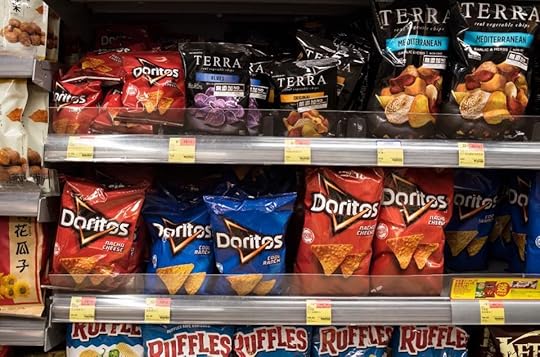
Photo by Miguel Candela/SOPA Images/LightRocket via Getty Images
While recent reports revealed that many cash-strapped students go a day or more without eating, in many parts of the country college students are ordering up fresh-ingredient meals and having them delivered by quick-thinking startups and even the colleges themselves.
From 2012 to 2017, food delivery sales rose by 20%, with individual orders rising 10%, thanks in part to mobile apps such as DoorDash and UberEats, according to a recently released survey by the market research firm NPD Group.
Food sellers should be paying close attention; this formative-year development of how food is acquired and eaten (or not) will likely determine how today’s freshmen select and buy their foods for years to come.
Getting Students ‘Hooked’
For many students, the crop-up of apps could open new culinary worlds — if they have the wherewithal to order.
According to a study released in April, called Still Hungry and Homeless in College, 25% of all college students had in the previous 30 days skipped meals or cut the size of their portions because they couldn’t afford to eat properly.
Those who can afford to eat, meanwhile, don’t even have to leave their dorm rooms. They have a smorgasbord of food-delivery choices, from college-catering apps to campus-supported delivery. The key difference between these options and those of years past is the quality of the food being delivered. Pizza and burritos are being replaced by black bean burgers, lobster rolls and whole-grain bowls.
Here are a few examples:
Spoon University Meal Plan: A partnership between Spoon University, which targets college-age foodies, and the meal delivery company Chef’d, this service offers complete weekly meal boxes expressly for students. Boxes include pre-portioned grab-and-go meals, fresh fruit, snacks and beverages. For an added fee, students can add quick meals such as fish tacos, chicken flatbread or quinoa fried rice.
Hooked: This app partners with restaurants and businesses in college towns across the country to offer five-hour deals, or hooks. Though the model is based on students picking up their orders from places such as 7-Eleven, Firehouse Subs and BBQ 13-0 (in Texas, where one can order a deviled-egg-and-barbeque-bacon sandwich), some partner restaurants could offer delivery.
Stoovy Snacks: Only at Boston University, this servicespecializes in door-to-door delivery made by BU students, which is an important distinction for those who do not want to get dressed and take the elevator to the lobby (the founder is a Boston University sophomore). Couriers such as GrubHub cannot cover that “last mile” to the dorm room because a college ID is required to get past security, which Stoovy couriers carry.
UMass Fresh: Nearby at University of Massachusetts Amherst, operators of on-campus dining services have introduced on-demand, heat-and-eat meals as part of the college meal plan. The prepared meals are designed for students who live off campus and don’t want to sit in the dining hall, especially after late classes. The described chef-made meals can be heated up in minutes and, importantly, keep the dining dollars within the university.
Some Retailers Are Biting
Colleges are correct to try and counter the competition for their students’ dining dollars. In addition to delivery food services, retailers are recognizing the opportunities that exist on campus, while also addressing the need for affordable foods.
Target recently announced plans to build 130 small-format stores across the country, many in college campus areas.
Amazon is opening instant pickup lockers near colleges, where Amazon Prime Student members can retrieve snacks, drinks and personal items just two minutes after placing their online orders.
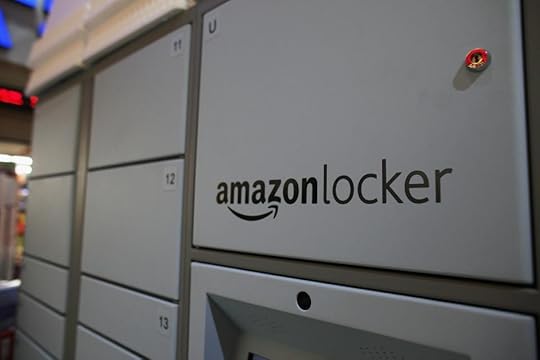
Photo by Spencer Platt/Getty Images
Whole Foods is targeting college communities with its smaller, more affordable 365 by Whole Foods stores.
And Dollar General opened DGX, a smaller-format store near Vanderbilt University in Nashville, Tennessee, that offers student-friendly grab-and-go foods including fresh meals, snacks, coffee and donuts.
3 Marketing Lessons
These efforts will likely intensify as retailers recognize the extent to which technology is closing the gap between campus and commerce. In doing so, here are three points to keep in mind:
Start young. Think in-store meal kits for kids. Many supermarkets already offer their own meal kits. If they expand them to include kid-friendly meals, similar to a restaurant’s kid menu, children will grow up expecting such options as standard fare.
Start in the summer. Meal services, from prepared meals to membership apps, should be heavily marketed in the summer when parents and college students are considering their campus needs.
Start price comparing. The average school meal plan costs $4,500 an academic year, according to the Boston Globe. Any service that can undercut that price, or offers convenience or quality that beats the meal plan, can gain an edge.
Retailers also should recognize the intelligence of the target market. Students are already savvy consumers. If the service doesn’t offer something different or meet specific needs, or if they feel duped, they’ll move on, even if it’s 3 a.m.
This article originally appeared in Forbes. Follow me on Facebook and Twitter for more on retail, loyalty and the customer experience.
April 17, 2018
5 Ways A Walmart-Humana Partnership Could Change Everyone’s In-Store Experience
Walmart wants to put a lower price on healthcare, and the prognosis for retail may be a total transplant of the shopping experience.
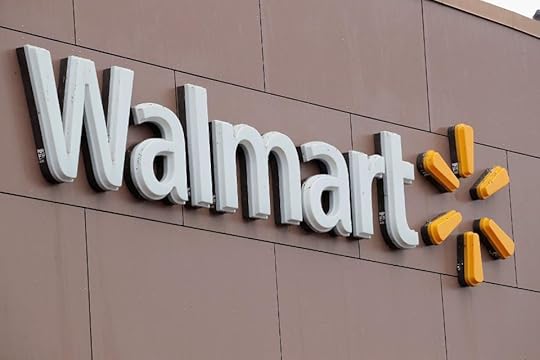
(Photo by Scott Olson/Getty Images)
If Walmart’s reported interest in acquiring or expanding its relationship with health insurer Humana HUM +1.44% is to materialize, it would be the widest-reaching move toward transforming retail from a seller of goods to a seller of health. And that would mean the traditional retail store, across a variety of segments, would change.
Walmart joins other retailers pursuing the insurance industry, including CVS Health, which is in the midst of acquiring Aetna, and Amazon, which is partnering with JPMorgan Chase & Co. and Berkshire Hathaway to establish an independent company to provide affordable healthcare to employees.
The potential difference is while CVS and Amazon are focused specifically on providing healthcare services to consumers and employees, Walmart and Humana could focus on home health and preventing disease.
Humana already sells Medicare drug plans through Walmart, often at discounts. Further, Humana is among the top providers of the private Medicare Advantage plan, which could have its benefits extended beyond disease management and wellness programs to include added services that improve quality of life.
If Humana and Walmart were to expand their partnership to illness prevention, it would pressure other retailers, from Target to Kroger, to supply affordable, engaging ways to merchandise healthcare. With more consumers making their own insurance and treatment choices, it makes sense.
Following are five ways a Walmart-Humana relationship could reshape the total in-store format.
1. Shelf changes
A key asset in a Humana partnership, for Walmart, would be extended shopper data, especially among seniors, who are an important Walmart segment. These insights into health issues and behaviors could be used to determine new category segments, to reshuffle the shelf to combine products that previously did not seem compatible and/or to extend existing categories.
Walmart may learn, for example, that shoppers who regularly buy dental soft picks also take prescriptions for diabetes, because gum disease is a common comorbidity. It can place these dental products in the sugar-free cookie aisle.
2. Exercise classes, meditation
Walmart is already pursuing several ventures to bring medical treatments into the store, and that would likely extend to prevention. In addition to its large pharmacy business, Walmart operates primary-care clinics and is exploring in-store lab-testing services. Humana, meanwhile, is closing a deal to buy Kindred Healthcare’s home health and community care businesses. A combined focus on illness prevention and reduction could encourage services such as exercise instructions, nutrition seminars and even mental health programs. Humana insurance members could be eligible for Monday meditation classes or Friday foot massages.
3. “Walhealth” locations
If the goal of Walmart, and other retailers, is to lower overall healthcare costs by providing affordable health services to all, then they’ll need to be where all shoppers live. This includes urban areas where many shoppers may not have access to a car, and rural locations where there are fewer healthcare providers nearby. Think of variations of CVS MinuteClinics, which are staffed by nurses and physician assistants who diagnose, treat and write prescriptions for illness.
With an insurer involved, however, these retail-partner locations (which could be rolling or pop-up stores) would focus more so on early detection and prevention — residents might be rewarded for making regular wellness visits for blood pressure checks, weigh-ins or good-nutrition classes.
4. Subtracted additives, added sustenance
Food is an inextricable component of health, so good nutrition would become an essential part of the in-store merchandise selection. Since Humana is focused on preventing illness, one would expect fresh, nutrient-rich foods to become more heavily emphasized. An insurer might not cause Walmart (or other retailers) to stop carrying high-sodium frozen meals and processed meats entirely, but it could encourage allocation of less shelf space to these foods, while more is dedicated to fresh produce, lean meats and sell-by-bulk grains. That Target put big-brand processed food makers such as Kellogg and General Mills on notice three years ago supports the likelihood this trend is holding.
5. Special thresholds
It seems small, but a separate entrance for healthcare customers could sharply change the path of the shopping trip and result in unexpected purchases. It’s also practical — a good number of customers who pop in for prescriptions or to get the results of lab work aren’t in the shopping mindset, or simply don’t have the time. However, the retailer could make access to these services easy while also displaying convenience items that might surprise and appeal to the shopper at that moment, such as single-serve salads, calcium supplements and cooking utensils, which may resonate with shoppers who have healthier living on their minds.
All of these changes would of course need to generate enough sales, meaning shopper interest, to make the investments worthwhile. So in addition to changed formats, a generation of healthcare-merchandising retailers would have to provide intriguing, energizing services and experiences. If they do, the odds for a good prognosis in retail are high.
This article originally appeared in Forbes. Follow me on Facebook, Twitter for more on retail, loyalty and the customer experience.
A Reward Program Without The Credit Card: What Target Could Learn From Macy’s, Nordstrom
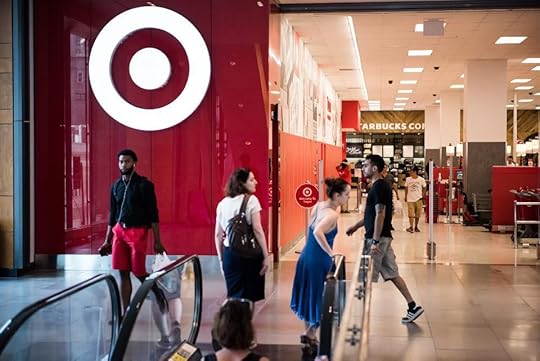
Photographer: Mark Kauzlarich/Bloomberg
If there’s one reward lesson Target could learn from Nordstrom, Macy’s and others, it’s this: Red could be the new black.
Red as in Target Red, the reward program the mass-retail chain is testing in Dallas-Fort Worth. And black as in profit-maker. If it tests well, Target Red could become the alternative to the Target REDcard credit card. Unlike REDcard, which kicks back 5% of each purchase to its cardholders, Target Red rewards shoppers 1% on all purchases no matter how they want to pay, even if it’s with cash.
Such multi-tender programs have become more prevalent in recent years, as Nordstrom, Kohl’s and most recently Macy’s transitioned to the model. Based on the results among these retailers, Target’s Texas test might not be necessary.
Here’s what Target, and its shoppers, could expect from a multi-tender rewards program.
Good company
By lowering the barriers to entry, Target is nearly certain to see an escalation in its overall reward program memberships — but they may not be higher spenders. Look no further than Nordstrom for evidence.
The Seattle-based merchant in 2016 extended membership into its Nordstrom Rewards loyalty program to include all shoppers, not just those who held its credit card. In the first year, enrollment nearly doubled, to 7.8 million active members from 4.1 million. In 2017, membership rose to 10.5 million, a 35% increase, according to its annual report.
That breaks down to 3.7 million new members in 2016 and 3.8 million in 2017. Sales from Nordstrom Rewards customers represented 51% of its total in 2017, an increase from 44% in 2016.
That 7% increase in penetration, on a membership increase of 35%, indicates the program is attracting lower-spending customers. This could present opportunities for targeted promotions.
More opportunities to engage
Target Red enriches the shopper’s omnichannel experience by providing special perks on online ordering and delivery, which consumers have increasingly come to expect. In addition to the 1% reward sum Target Red members earn on all purchases, they also receive free next-day delivery through Target Restock, a limited-market service through which shoppers can have boxes of self-selected staples, such as household goods, delivered for a flat rate of $4.99 per box.
Members also receive 50% off memberships with the same-day delivery service Shipt, which Target acquired for $550 million in December.
In similar fashion, Kohl’s, when it introduced the multi-tendered Yes2You Rewards in late 2014, focused on omnichannel opportunities, including the notable acceptance of Apple Pay. Its rewards, whether they’re Kohl’s Cash coupons or Yes2You rewards, can be redeemed online or in stores regardless of where they were earned. Further, in-store members who use its app could receive mobile coupons to redeem before checking out.
In 2017, Kohl’s posted a 1.5% sales increase in stores open at least a year, while sales per square foot rose to $229 in 2017 from $224 in 2016, according to its annual report. Macy’s, by comparison, posted a 2.2% decline in comparable sales, while J.C. Penney posted a 0.1% increase.
A new generation of loyalists
Younger shoppers are less likely to apply for credit cards, and therefore are less likely to be REDcard members. Just one-third of consumers between the ages of 18 and 29 had a credit card in 2016, according to Bankrate’s Money Pulse Survey. That compared with 55% credit card ownership among those between the ages of 30 and 49.
Many major brands are reckoning with the reality of credit card aversion among younger consumers. As Macy’s CEO Jeff Gennette told gatherers at a conference in March, when discussing Macy’s recently overhauled Star Rewards program, which is now multi-tender: “We believe that’s going to be very sticky with customers who don’t want a credit card.”
In particular, it should appeal to younger consumers — both millennials and their Generation Z cohorts. Among the goals of the revamped Star program is to attract new or infrequent customers in addition to increasing spending among Macy’s best shoppers.
Target Red should equally encourage new spending, not to mention potential future credit card holders, by getting younger (and colder) feet through its membership door.
Opportunistic shopping
If Target Red’s rewards resonate well with new members and deliver on perceived value, those members will be more likely to combine multiple shopping trips into one Target excursion. This will especially be the case among those shoppers who tend to use multiple payment methods.
OfficeMax’s card-free Office Depot OfficeMax Rewards Everything program, released in 2017, is a good example of incorporating incentives that encourage consolidated spending. The program includes a VIP tier that rewards members who spend more than $500 a year. Among the perks are free delivery and 5% back on products important to its customer base — ink, toner, paper, printing and copying services.
If Target Red introduces similar spending-based incentives, it could encourage shoppers to shift purchases they make at other stores, from food to footwear, to Target.
Each of these opportunities is worth considering, but perhaps the most compelling reason for Target to broaden and open up its rewards program is to capture a wider base of customers. In today’s retail environment, it’s better to allow regular shoppers to earn rewards no matter how they pay, since it’s rare to find a retail experience that is based on limitations. Retailers should instead focus on how to fully recognize their better customers, enhancing the value and experience they have as regular customers.
There are benefits to connecting with customers, but choosing access over exclusivity may be the surest way to turn Red into the new black.
This article originally appeared in Forbes. Follow me on Facebook and Twitter for more on retail, loyalty and the customer experience.
Bryan Pearson's Blog
- Bryan Pearson's profile
- 4 followers




